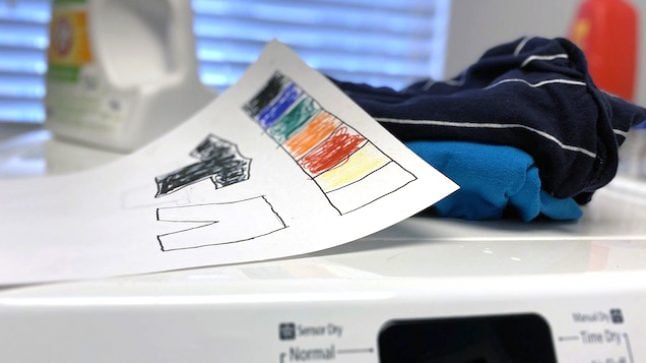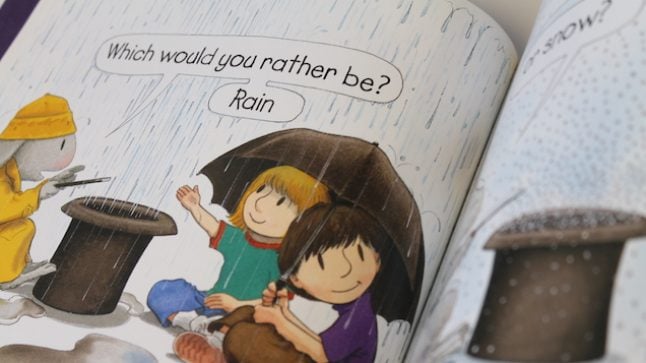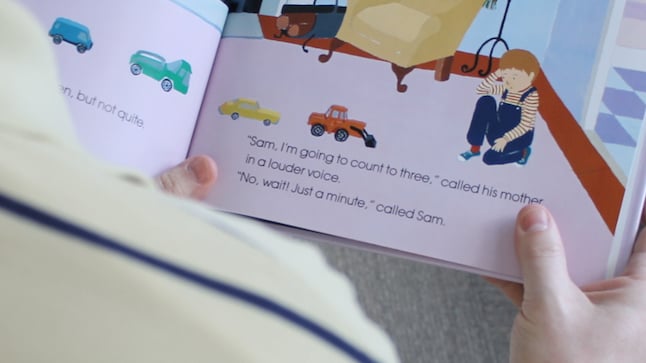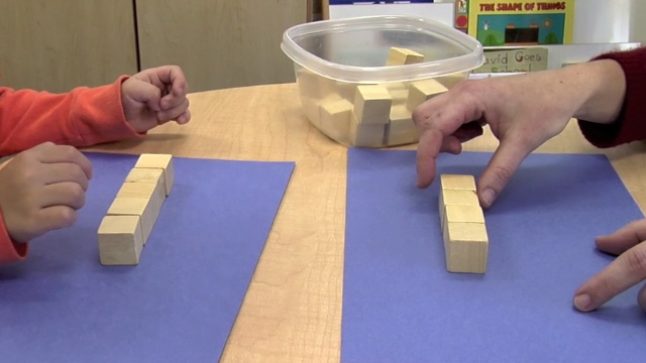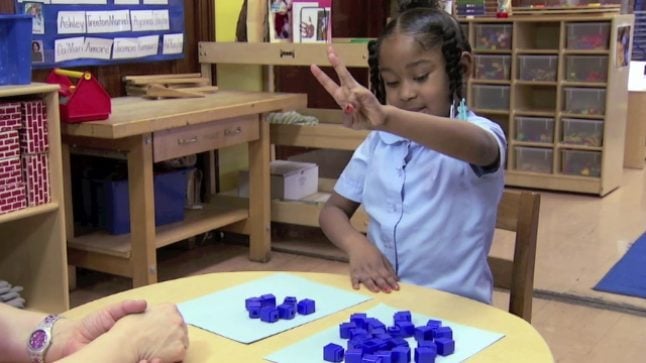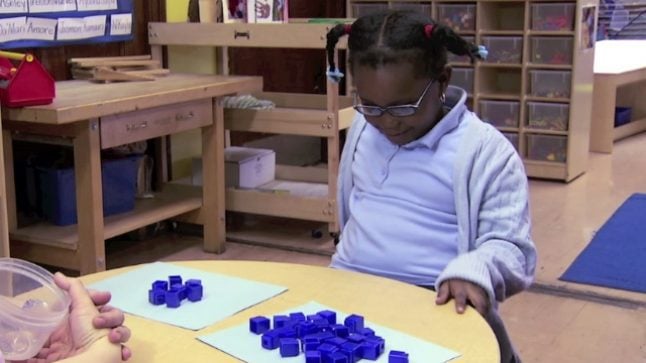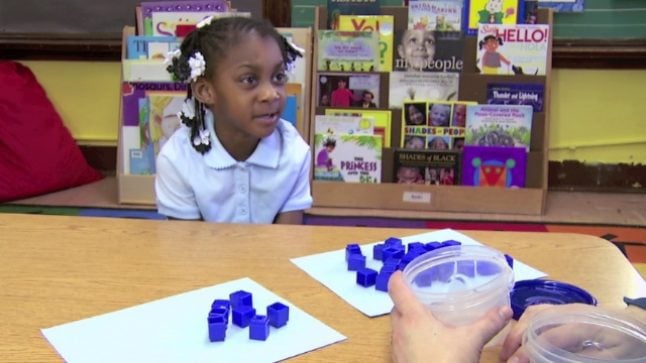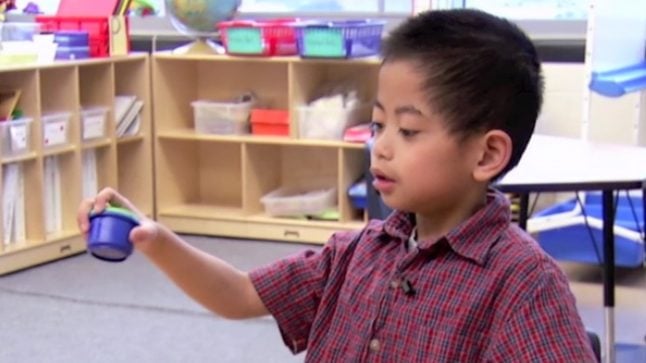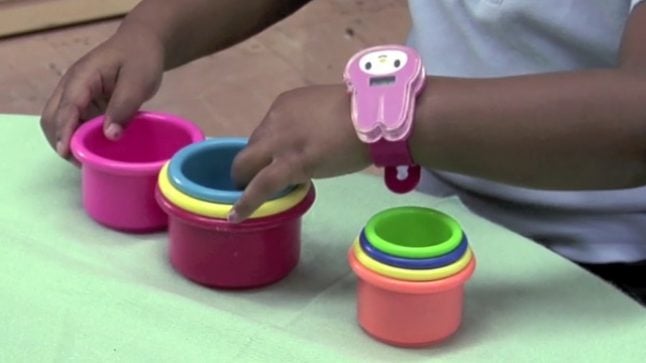Tagged as: Comparing
Comparing Numbers of Objects: A Start to a Lot of Math Thinking
Comparing numbers of things or quantities of objects, from blocks in front of them to the amount of water in two cups, is a fundamental beginning to many mathematical questions. Comparing is a natural starting off place for early math thinking.
Series: Focus on the Child
Noticing Same and Different: The Concept of Comparison with Infants and Toddlers
July 19, 2022
“More” is often one of children’s first words. Infants attend to differences, though they don’t yet discriminate between "more" as quantity or magnitude/size or intensity of sensation. Toddlers are beginning to differentiate between attributes and…
- Topic: Number Sense
- Age/Grade Level: Infants, Toddlers
- Tags Comparing
Series: Ideas at Work April 25, 2020
Let’s Wash that Math Right Into Laundry Day
Whether you have a machine at home or visit a laundromat, there is all kinds of math involved in doing laundry. And there are all kinds of ways that children of all ages can join…
- Topic: Sets
- Age/Grade Level: Pre-K, Kindergarten, 1st Grade, 2nd Grade, 3rd Grade
- Tags Estimation, Comparing, Attribute, Family Math, En Español
Series: Book Ideas March 24, 2019
3 Books That Encourage Simple Graph Explorations with Young Ones
At the heart of it, graphing in the early years is about quantifying information in order to answer a question. That requires children to organize data in some visible way so that comparisons and generalizations…
- Topic: Data Analysis
- Age/Grade Level: Pre-K, Kindergarten, 1st Grade
- Tags Stephen R. Swinburne, Whose Shoes?, William Steig, Which Would You Rather Be?, Anno’s Flea Market, Mitsumasa Anno, Comparing, Shoes, Graphing
Series: Book Ideas March 8, 2016
4 More Children’s Books that Explore Measurement Concepts
Some time ago we suggested a few books that are great for exploring measurement concepts in primary grades. Now we're at it again.
- Topic: Measurement
- Age/Grade Level: Pre-K, Kindergarten, 1st Grade, 2nd Grade, 3rd Grade
- Tags Comparing, Books, Ellen Stoll Walsh, Tana Hoban, Balancing Act, The Line Up Book, Marisabina Russo, Is It Larger? Is It Smaller?, One Bean, Anne Rockwell
Series: Focus on the Child June 11, 2015
Comparing Quantity with Child 4
A child compares two small sets of wooden cubes.
- Topic: Number Sense
- Age/Grade Level: Pre-K, Kindergarten
- Tags English Language Learner, Comparing, Gesture, Child 4
Series: Focus on the Child June 11, 2015
Estimating Quantity with Child 3
A student approximates the number of cubes in collections of increasing quantity.
- Topic: Number Sense
- Age/Grade Level: Pre-K, Kindergarten
- Tags Estimation, Unifix Cubes, Comparing, Child 3
Series: Focus on the Child June 11, 2015
Estimating Quantity with Child 8
A child estimates the number of cubes in a collection.
- Topic: Number Operations
- Age/Grade Level: Pre-K, Kindergarten
- Tags Estimation, Unifix Cubes, Comparing, Child 8
Series: Focus on the Child April 3, 2014
Estimating Quantity with Child 9
A child estimates the number of cubes in a collection.
- Topic: Number Sense
- Age/Grade Level: Pre-K, Kindergarten
- Tags Estimation, Unifix Cubes, Comparing, Child 9
Series: Focus on the Child April 26, 2013
Seriating Objects by Length and Capacity with Child 14
A kindergarten student finds a way to sort cups by capacity.
- Topic: Measurement
- Age/Grade Level: Pre-K, Kindergarten
- Tags English Language Learner, Comparing, Child 14, Capacity
Series: Focus on the Child March 2, 2013
Seriating Objects by Length and Capacity with Child 20
A student stacks cups to organize them by size.
- Topic: Measurement
- Age/Grade Level: Pre-K, Kindergarten
- Tags Comparing, Correction, Child 20, Capacity
Do the math.
Free videos.
Free newsletter packed with ideas.
Free professional learning modules.

